As an executive search firm, we’re on the frontlines of finding and placing the very best individuals at the highest levels of the org chart, but not all companies apply that same level of rigor and attentiveness for roles further down the hierarchy. We’re here to help.
Whether you’re hiring for the C-suite or the hourly workers on the floor, there are several core principles that need to be followed if you want to bring on the best talent:
Have a buttoned-up hiring process
Nothing kills a deal – or in this case, the hiring of a skilled employee – quite like time. We often see companies put great candidates through a month-long (or longer) process, only for the individual to accept a different offer from another company simply because it moved more efficiently. The longer the process takes, the more frustrated the candidate becomes and the less trustworthy they feel about how the entire company operates. For front-line workers, the moment a company first contacts a candidate to offer should be two or three interviews in less than two weeks. For senior management, that can be extended but not by a lot without the risk of losing them.
Don’t forget to sell the opportunity
Too often, clients forget that hiring is a two-way street. It pays to think about how the candidate may view the opportunity. Why should they choose to come to work for your organization over the others they may be speaking with? What does the growth path look like, what is the process for training and development and what are the organizational mission and values? It’s clear that especially with individuals who are still early in their careers, taking the time to articulate these types of details can help immensely in attracting top up-and-coming talent.
Understand your own reputation in the marketplace and in the community
How a company is perceived can be more powerful than reality. If an organization has a reputation for having below-market compensation and a toxic work environment, those will be barriers for hiring the best talent. We sometimes hear from our own clients, who despite successfully having undergone cultural transformations, still suffer from prospective employees’ false perceptions.
Because altering reputation can take quite a long time, being upfront in communication about those perceived deficiencies and how they’re being or have been addressed goes a long way. Simply crossing your fingers and hoping the best applicants either don’t know or don’t care is not the mindset of top employers. For companies that pull from the community: Locals talk, especially outside the cities where manufacturing companies can be one of the largest employers in the area, so investing in the community goes a long way in building a strong reputation.
Screen for cultural fit
Culture permeates from the top of the C-suite down through each layer of the organization. Ensuring every single employee is on board with the company’s mission, direction and vision with a commitment to operational excellence helps maximize productivity.
Prioritize onboarding
Joining a new organization is an exciting time in a person’s life, so it can be quite deflating when that person isn’t actively engaged upon starting. New hires in every role need to feel immediately welcomed and part of the team, and those can come in the form of simple meet and greets to hands-on training and guidance. Even a new CEO needs time to properly evaluate the current state of the company – and that can’t be done alone. The same goes for a front-line worker who may already have experience with certain equipment, but being on a productive team is deeper than the ability to operate a press brake. Making a clear onboarding plan will help the new employee start off on the right foot and increase the likelihood of staying for the long term.
